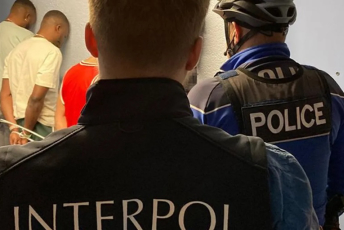All it takes to manufacture a craft gun in Ghana is US$9. Gunsmiths produce about 200 000 of these illegal weapons a year, selling them for between US$90 and US$150, depending on the type and technology of the weapon.
These weapons are used by criminals in 90% of the country’s home robberies, as well as in banditry, trafficking and reprisal attacks. From September 2022 to April 2023, 30 people were killed by men armed with craft guns in 12 separate incidents in north-east Ghana.
Demand for these illicit weapons is also driven by the growing number of organised ethnic youth groups, formed to protect their respective communities. It was estimated that by April 2023, there were 23 such self-defence groups operating in Bawku (Upper East Region) alone.
Although local production of weapons is prohibited under Ghana’s laws, the country has one of the most sophisticated craft weapons production and trafficking networks in the sub-region. This poses a serious threat to the country’s security and stability, encouraging crime and prolonging regional conflicts, which undermine government and impede socio-economic advancement.
It is believed that a number of illegal arms manufacturers operate discreetly in remote places. Several areas have been identified as hotspots or transit zones for arms manufacturing and trafficking. These include Bawku, Sabunjida Machele-ne in Northern Region, Techiman in Bono East Region, Alabar and Suame Magazine in Ashanti Region, Elubo, Kasoa and Ashaiman in the Western, Central and Greater Accra regions.
A security analyst who requested anonymity told ENACT that illegal arms manufacturers were usually blacksmiths whose knowledge was passed on from one generation to the next, or occasionally to apprentices. Blacksmiths involved in manufacturing cooking utensils and various craft ornaments also manufacture illegal weapons, which is much more lucrative.
While many artisanal manufacturers claim that they refuse to sell their products to criminals and smugglers, there is no way to confirm this. Blacksmiths sell their craft weapons to middlemen who sell them to traffickers. The traffickers smuggle them over the border and use well-established distribution networks to target buyers. In the local setting, arms are supplied to criminal elements in the regions close to where they are manufactured and to smugglers from Nigeria and Sierra Leone. And although traffickers face prosecution if caught, this does not discourage them.
Kwesi Aning, a Kofi Annan International Peacekeeping Training Centre professor, told ENACT that if criminals could access all types of guns, including military-grade, this indicated that Ghana had ‘created a fertile ground both for the acquisition of the necessary tools for violent attacks and also for resupply and supply networks.’
Ghana has made limited progress towards controlling weapons in the country. Until 2019, it had no system for identifying civilian-owned weapons. More recently though, the Small Arms Commission initiated a coding system to ensure all firearms owned by security services as well as by civilians were marked with distinctive codes and other features. Data on the ownership is captured in a growing national database.
This coding effort is in accordance with Article 18 of the ECOWAS Convention on Small Arms and Light Weapons, which requires member countries to mark their weapons to facilitate identification and traceability.
And while the illegal manufacturing of arms is of primary concern for Ghana’s internal security, the issue goes beyond its national borders. Ghana’s craft weapons often end up fuelling conflicts in neighbouring countries. Some explosive devices found in Mali, Guinea and elsewhere in the Sahel and West Africa are identified as originating in Ghana. Likewise, the growing instability in neighbouring Burkina Faso has created a fertile illegal trade in craft weapons.
While much is still needed to curb the illegal flows and trade in weapons, there are several actions, in addition to the coding, that could decrease this illicit economy.
Developing a database of all blacksmiths in Ghana is a first step towards identifying those engaging in illicit gun manufacturing. This would enable the government to better map out and monitor the operations of likely or identified illegal gunsmiths and arms dealers dotted all over the country.
Linked to this, authorities could exercise greater oversight and control by registering blacksmiths and blacksmith associations to ensure their compliance with manufacturing legal products, such as farm implements, in order to sustain their livelihoods. A blacksmith representative speaking at a 2023 ECOWAS workshop in Accra said designing a ‘sustainable alternative livelihood programme that provides at least equivalent benefits to arms manufacturing’ was key to controlling the illegal manufacture and trafficking of craft weapons.
More appealing is regulating the manufacture of craft weapons to enable the blacksmiths to operate legally. This would increase the state’s ability to control and monitor the trade. In addition, a mechanism that offers blacksmiths the opportunity to convert their production from illegal to legal will be needed. Here, a moratorium against prosecution for a certain time period – and pending adherence to certain requirements – may incentivise blacksmiths to register on the database and enable greater control over artisanal weapons manufacturing.
Acknowledging the probable complicity of state officials in facilitating the illegal trade, especially at the borders, is equally critical. Investigating and prosecuting corruption is needed to disrupt the trafficking chain and make bribe-taking less attractive to fellow officers at all levels.
These measures to tackle Ghana’s arms trafficking problem will make a meaningful contribution to the African Union’s ambitious target to Silence the Guns in Africa by 2030.
Abdelkader Abderrahmane, Senior Researcher, ENACT, West Africa, and Solomon Okai, Senior Programme Officer with Foundation for Security and Development in Africa (FOSDA)








